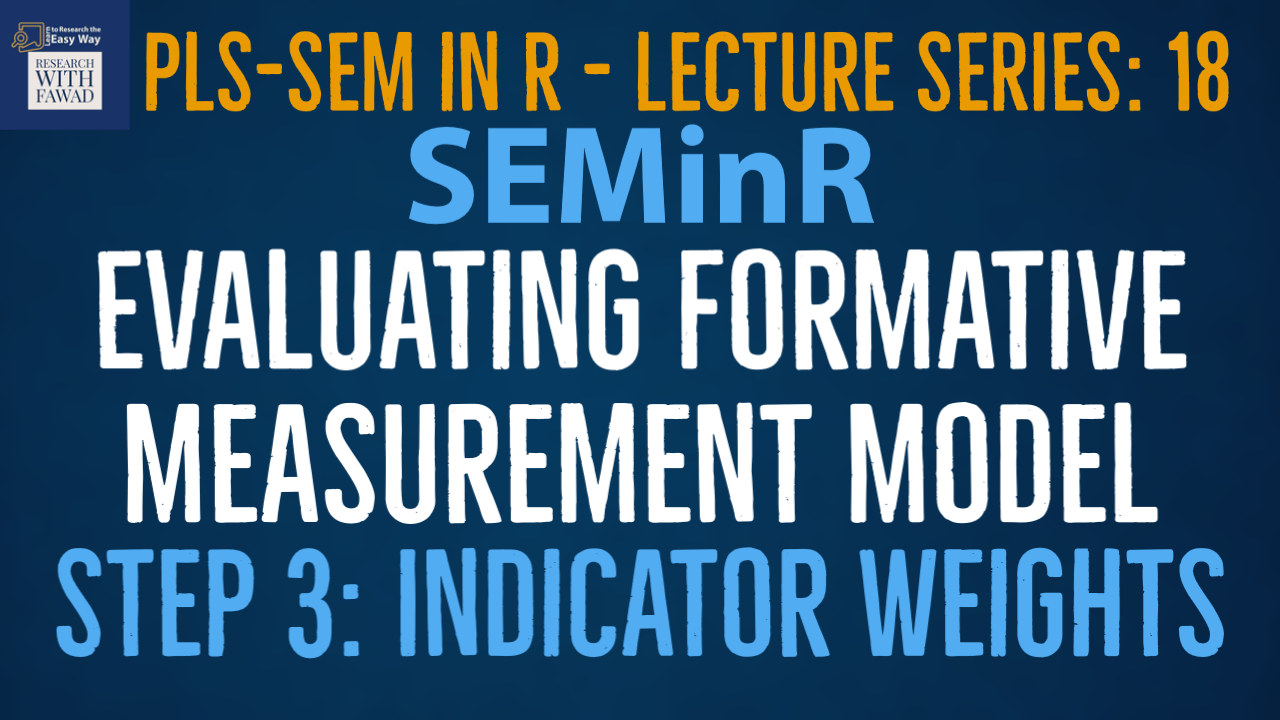
SEMinR Lecture Series
This session is focused on step 3 of the formative measurement model assessment. The tutorial will guide on how to assess the indicator weights using SEMinR.

This session is focused on step 3 of the formative measurement model assessment. The tutorial will guide on how to assess the indicator weights using SEMinR.
summary_boot$bootstrapped_loadings.
Hair Jr, J. F., Hult, G. T. M., Ringle, C. M., Sarstedt, M., Danks, N. P., & Ray, S. (2021). Partial Least Squares Structural Equation Modeling (PLS-SEM) Using R: A Workbook.
The tutorials on SEMinR are based on the mentioned book. The book is open source and available for download under this link.